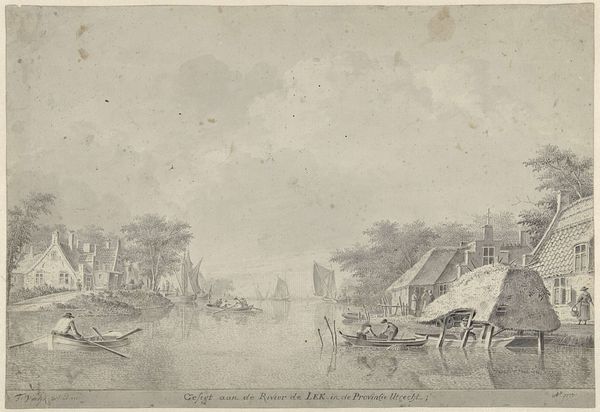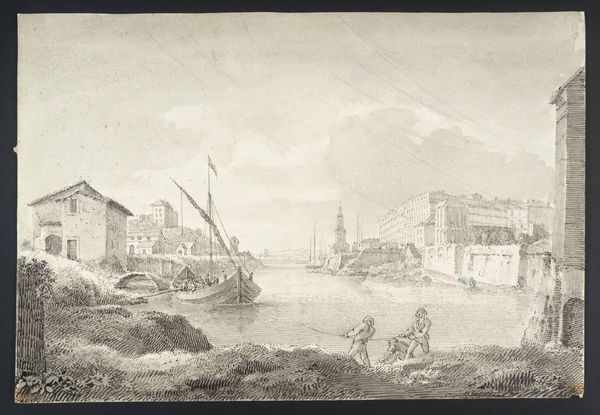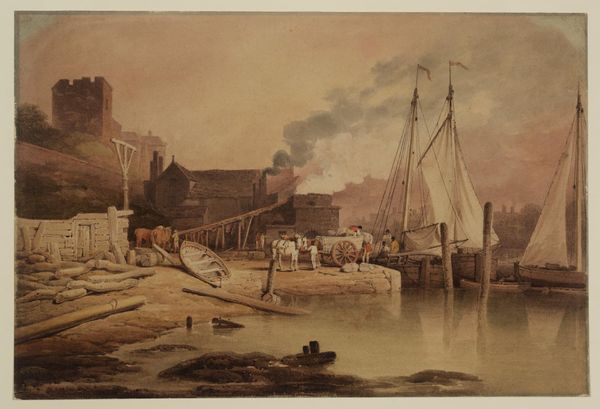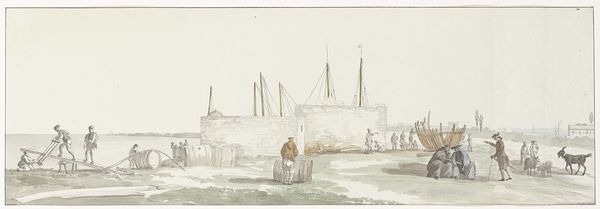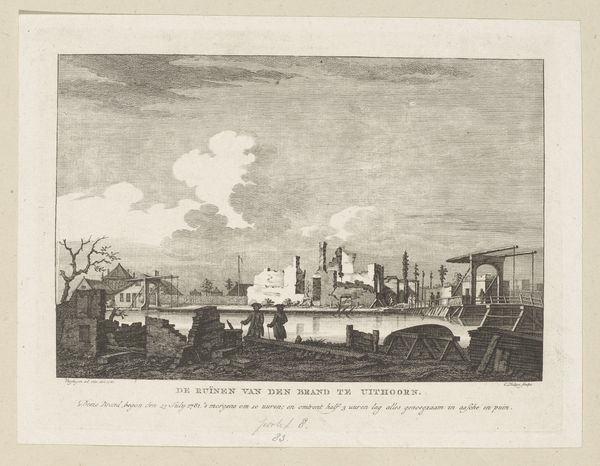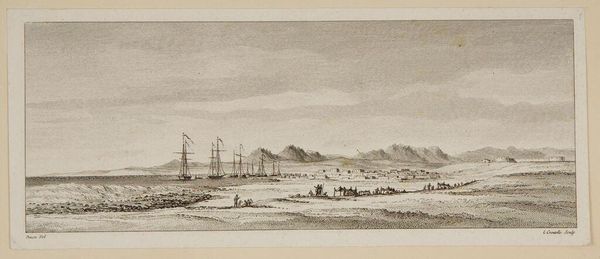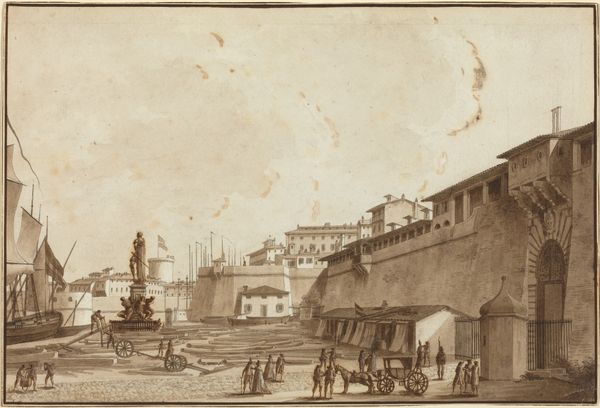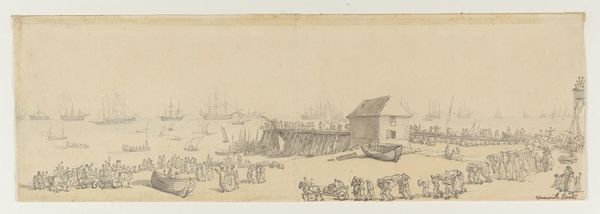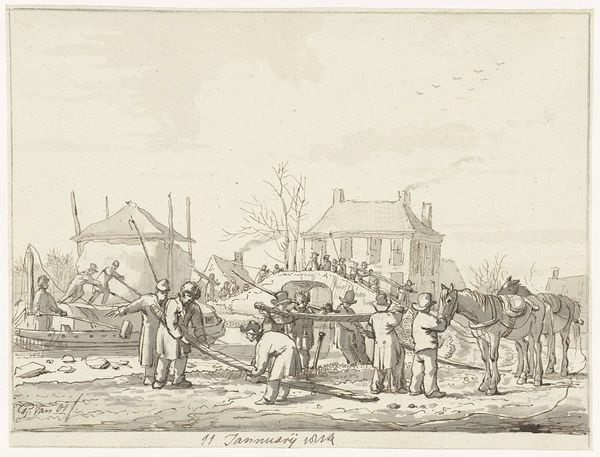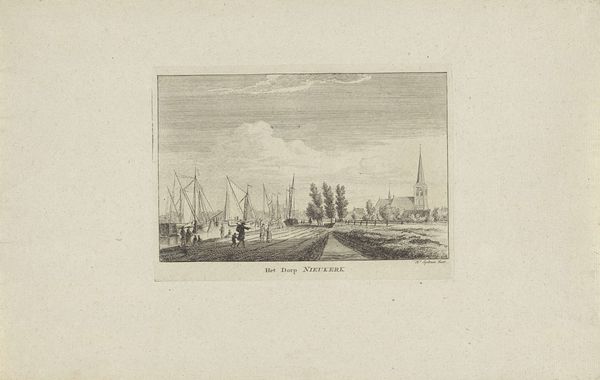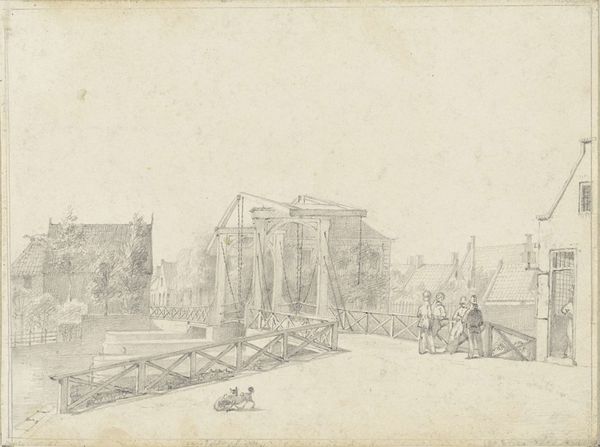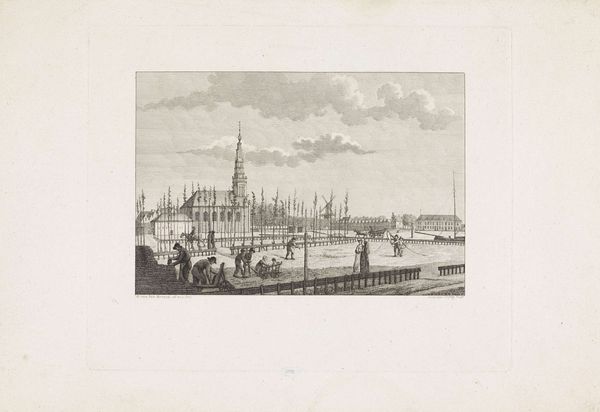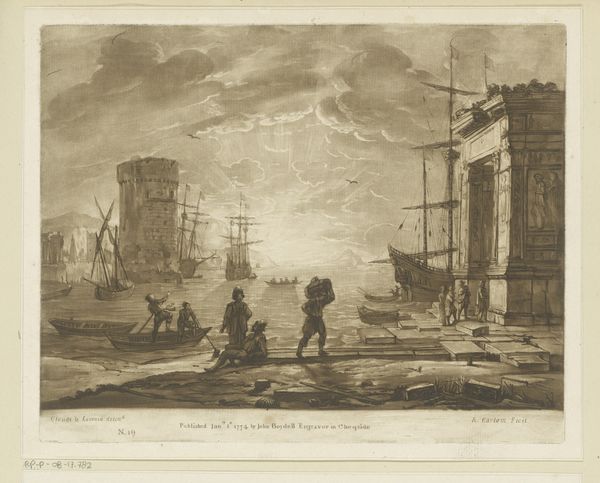
Werkzaamheden aan de zeesluis en droogdok te Hellevoetsluis, ca. 1802 c. 1802 - 1806
0:00
0:00
drawing, paper, ink, pencil
#
drawing
#
neoclacissism
#
landscape
#
paper
#
ink
#
pencil
#
cityscape
#
genre-painting
#
realism
Dimensions: height 535 mm, width 760 mm
Copyright: Rijks Museum: Open Domain
Curator: Balthazar Jooss offers us a fascinating look into 19th-century engineering with this work on paper, rendered in pencil and ink, entitled "Work on the Sea Lock and Dry Dock at Hellevoetsluis, ca. 1802," which resides here at the Rijksmuseum. What's your initial read? Editor: The overwhelming impression is of human activity striving within a cavernous space. The grays and beiges evoke a sense of cool industriousness. It feels like looking at an enormous amphitheater of labor. Curator: Absolutely, the space *is* monumental, particularly as the small figures animate the scene. Notice how Jooss’s application of line captures the nuances of textures. The artist really emphasizes the scale and ambition of the endeavor with that subtle wash and draughtsmanship. Editor: There is definitely that sense of the heroic, but filtered through a Northern European lens. It isn't quite the Roman triumphalism of neoclassical art; there's a grounded, almost documentary feel. All those individuals gathered…there’s definitely something to unpack. What stories are held within them? Curator: Indeed. Look at the groupings: officials in their finery contrasted with the laborers in various stages of work. It presents an interesting social tableau, one typical of genre painting. It certainly illustrates not just construction but the era itself. I'd say it touches on the period's civic pride. Editor: Pride perhaps mingled with vulnerability? I see the sea lock as a symbol, reflecting a society both confident in its engineering prowess and aware of its constant negotiation with the elements. The cityscape itself seems ever fragile in this endeavor, dwarfed by the elements beyond those walls. Curator: A fitting sentiment. It makes you consider our relationship with progress. Jooss captured the image as Neoclassicism found a home in realism. An elegant fusion in that respect! Editor: So, as we pull away, I can’t help but to consider how Jooss transformed mere infrastructure into a lasting meditation of aspiration, industry and collective effort. Curator: And on how society constantly builds, literally and figuratively, the stage on which it performs. Thanks to the detail with which the artwork represents that, this work still speaks profoundly today.
Comments
No comments
Be the first to comment and join the conversation on the ultimate creative platform.
